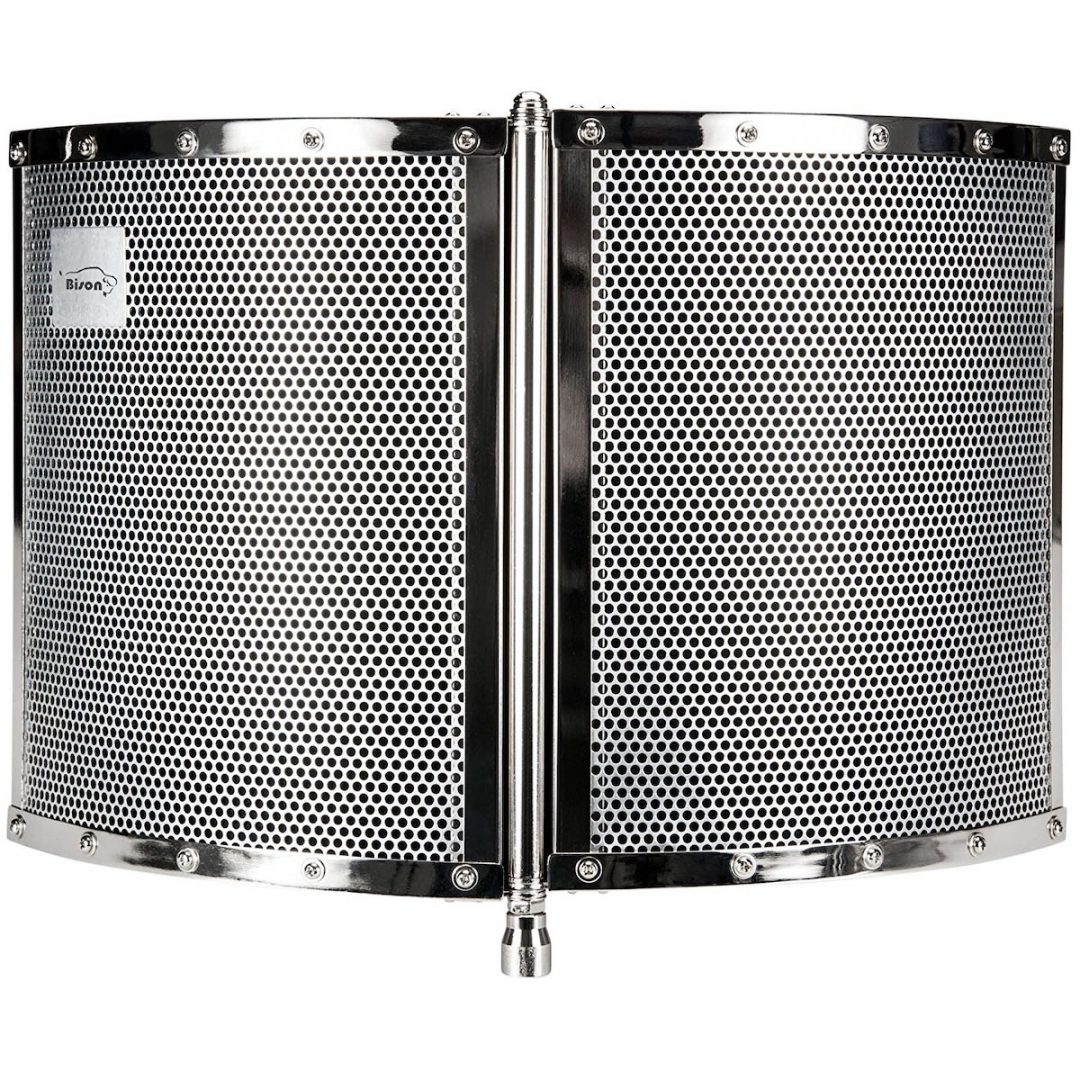Portable vocal booths cater to home studio enthusiasts looking to isolate their recordings. Having too many room reflections is one of the biggest problems of recording at home. Apart from sounding echoey, untreated reflections also produce comb filtering for a weak and thin sounding performance.
Making a Case for Portable Vocal Booths
Lots of beginning engineers won’t fully understand why people use portable booths, even though the name gives a lot away.
It’s very important to understand that the purpose of a portable vocal booth is not to give artists a totally isolated environment to record. Instead, they shield the microphone from some of the room’s natural acoustics. Realistically, no portable solution can replace a quality recording environment.
You’ll still need a halfway decent room to begin with; this means treating first reflection points with some basic home acoustic treatment.
Consider a portable booth if you’ve done some acoustic treatment in your home studio, and you’re looking to mop up some of the remaining room sound in a vocal recording. Or, of course, if you travel a lot and need to do sessions any time, anywhere, regardless of the room. Otherwise, these devices aren’t stand-ins for professional recording studio booths.
Why You Should Buy One
The main reason to invest in a portable vocal booth is that you want to record better sounding vocals at home. However, there’s still some extra reverb and noise when you record. Ultimately how effective the booth is still depend on the quality of your home studio.
For the best results from a portable booth in your home studio, make sure you’ve done your best to address the following:
Treat first reflection points. Acoustic treatment helps absorb reflections and improves the balance of recordings. It will also reduce comb filtering, which is when colliding frequencies cancel each other out. If you have to choose between treating your room or buying a vocal booth, go for the acoustic treatment first. Done right, you can still record a good sounding vocal right in the middle of the room.
Types of Portable Vocal Booths
The main type are reflection filters which cover roughly 180º behind the mic and a bit on the sides. They typically don’t come over the top or bottom of the microphone at all, and instead just block off the backside.
There are a couple companies producing more interesting designs intended for more coverage all the way around, too, but they’re less common.
- Related: DIY Vocal Booth for Home Studios
sE Electronics Reflexion Filter PRO
sE is the industry standard when it comes to portable vocal booths. They introduced theirs in 2006, and have sold over 100,000 since. There are plenty of cheap foam filters on the market, but sE tends to stand out.
This one uses their patented multi-layer technology to ensure a balanced, even sound with no coloration. It just isolates the mic from the rest of the space that it’s in, as any good portable booth should.
Aston Microphones Halo Reflection Filter
This filter looks substantially different than sE’s patented reflection filter. Aston’s has a unique, shell-shaped design that wraps around the top, bottom, and sides of your mic for maximum isolation from room sound. The Halo also has a textured surface for more diffusion. It’s made out of of PET felt (from recycled plastic), which is one of the most efficient and lightweight acoustic materials produced.
Kaotica Eyeball
The Eyeball takes Aston’s design a bit further and puts an entire sphere over the top of a microphone. It’s like a gigantic foam pop filter that reduces incoming reflections at every angle.
It’s designed for ultimate portability weighing just 5 ounces and being just a bit bigger than a softball. The Kaotica Eyeball has become quite popular in the last few years for home studio enthusiasts as well as in bigger studios where vocalists like to record in the control room.
Primacoustic VoxGuard VU
This Primacoustic VoxGuard vocal booth features a simple foam construction making it very affordable. Interestingly, it has a built-in plexiglass ‘window,’ so the artist and engineer can maintain their line of sight. This is a pretty cool feature if you’d position your artist to your left or right hand side; you probably wouldn’t have them directly in front of you in a home studio setup, though.
Porta-Booth Pro
Surely this the most booth-esque portable vocal booth on the list. This one folds out from a backpack sort of shape into a full on ‘room’ made of Auralex foam. Still, it’s only 7 pounds, so most mic stands can withstand its minimal weight.
LyxPro VRI-20
The LyxPro takes cues from sE’s patented design. The interior features high-density acoustic foam enclosed by meshed aluminum. Room sound hits the outer metal mesh and diffuses itself; whatever passes through gets absorbed by the acoustic foam inside.
Portable DIY Vocal Booths: Conclusion
Portable devices like those aimed at minimizing reflections around a mic can definitely help in untreated rooms. They won’t always solve every single problem or replace a professional vocal booth, but they’re better than nothing for a simple home studio setup.
If you have the resources to invest in some basic acoustic treatment, this will go a long way in helping not only your recordings, but your mixes as well.
